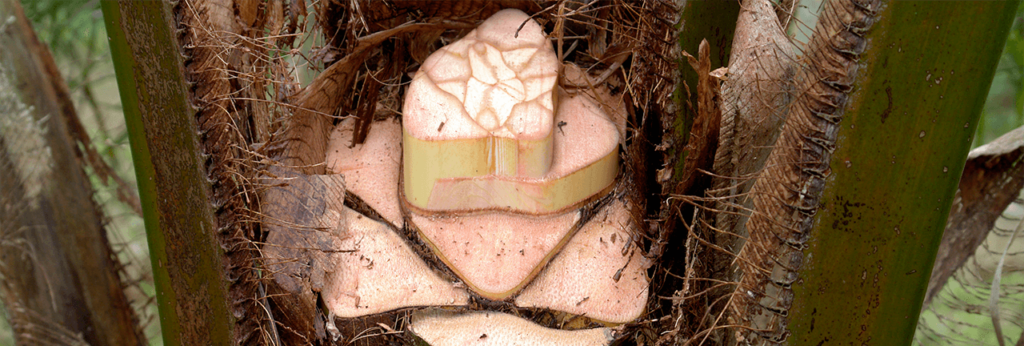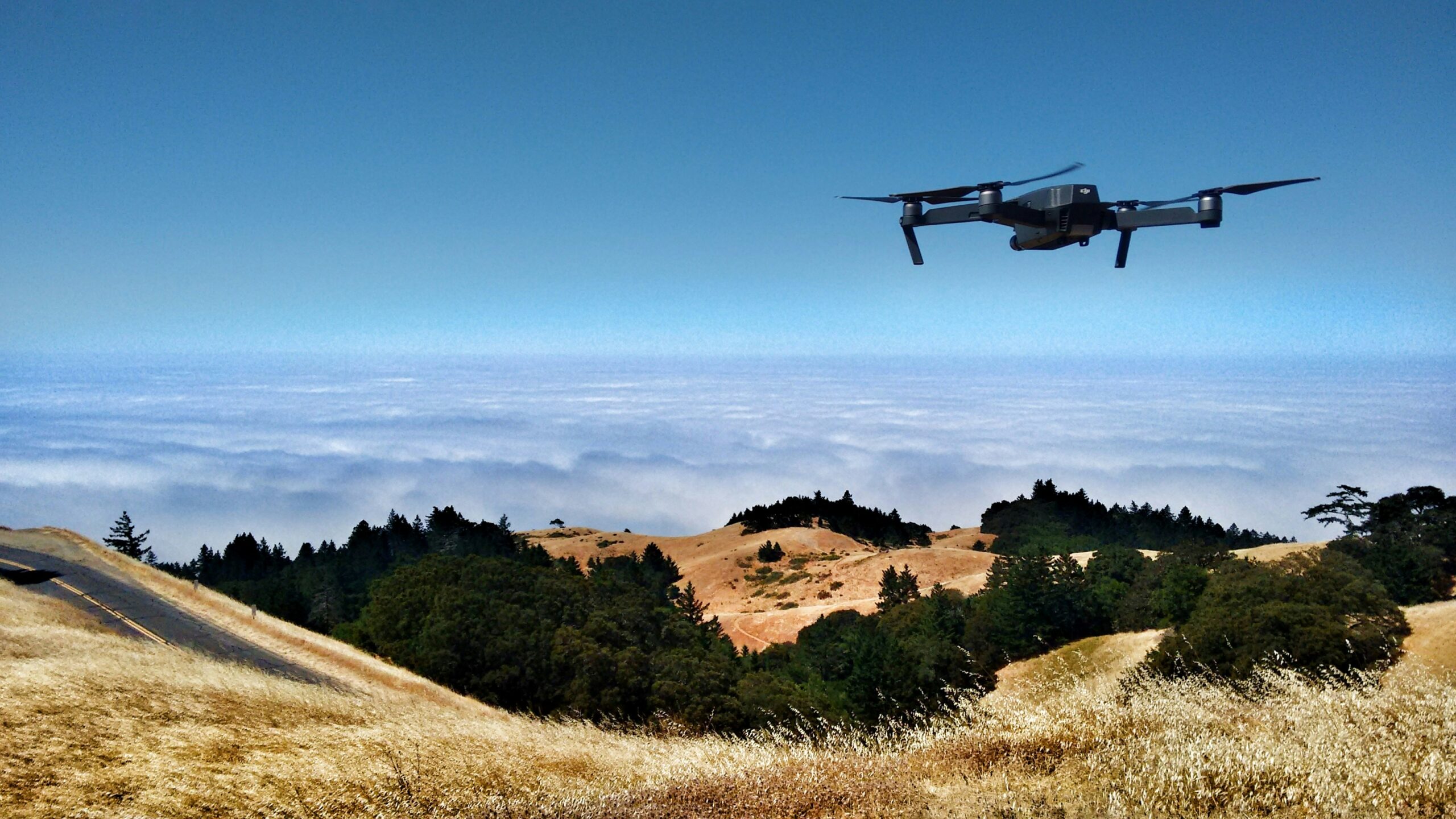
Vladimir Bravo Yandún – Head of Research and Development of the National Association of Oil Palm Growers (ANCUPA)
According to the 2017 census, oil palm registered 257,120 hectares (ha) cultivated by 6,567 palm growers in Ecuadorian territory (MAG, 2018). In these crops, the biggest phytosanitary problem, Bud Rot (CP), devastated 10,000 hectares in eastern Ecuador. Since 2005, the disease has destroyed 15,000 hectares in the San Lorenzo canton (Esmeraldas); In 2010 it affected 8,000 hectares in the Viche parish (Esmeraldas); and in recent years it has decimated plantations located in Esmeraldas, Imbabura, Pichincha and Santo Domingo de los Tsáchilas, estimating an approximate loss of 125,000 ha (Bravo, 2018).
PC can lead to the death of the plant in a period of between 2 weeks and 6 months, it is highly contagious and has no cure (Fig. 1). Advantageously, the development of interspecific hybrids has opened an opportunity to continue cultivation, avoiding lethality, but with effects of different severity. To manage this disease, it is essential to timely diagnose the diseased palm and implement practices that contain its spread.

The sustainability of this crop is fundamental for the economic and social development of the areas where oil palm is planted. To do this, it is necessary to avoid the impact of diseases, but generally their detection is a process that requires considerable resources and can have errors or a delayed reaction, causing its rapid spread. Investigations with the use of unmanned aerial vehicles (UAV), or commonly known as drones, is an alternative for the detection of CP. The method is based on using drones equipped with cameras, capable of generating orthophotos in visible color (RGB) and different spectra that are not detected by human vision (multispectral). The differences in leaf pigments allow calculations with vegetation indices that can be associated with the problems of the plant that is infected with CP.
The use of new technologies for pest management has proven to be useful in reducing crop losses. In Malaysia, for example, the disease caused by Ganoderma has caused serious losses; however, the use of portable hyperspectral instruments is actively used to discriminate between healthy and infected plants (Chong et al., 2017). With this information, a rapid and efficient detection method was generated to detect this disease, the same that can be applied to other palm diseases (Shamshiri et al., 2018).

In Ecuador, the use of these technologies for pest detection is an attractive alternative. In fact, the study by Viera et al. (2020) determined that vegetation indices would be useful for CP detection, specifically using the Visible Atmospheric Resistant Index (VARI). The VARI allows detecting diseased plants in the initial stages with symptoms still invisible to the human eye (Fig. 2), which facilitates timely detection of the disease and prompt action to eliminate the diseased individual with the implementation of best practices. agricultural, which guarantee the correct development of the crop.
In this way, the use of technological tools for disease control in oil palm cultivation has the potential to become a great facilitator for the timely detection of sick individuals, so that actions to contain the problem reduce or avoid damages of economic importance. CP has caused great losses in Ecuador and the region, and its management still remains a major challenge. However, it is necessary to continue the development of research with remote sensors and multispectral cameras that allow identifying initial symptoms in other problems that are increasingly becoming a bigger problem.
Emerging diseases such as trunk rot or sudden wilt have serious implications in the cultivation of the hybrid, and currently their detection and control is limited to what is carried out by specialized personnel, who are not capable of timely detecting “invisible” initial symptoms, and which, due to the time required to carry out this activity, does not allow acting on time, in addition to representing a significant cost for the company and even greater economic losses.
The greatest current challenge is the creation of multidisciplinary teams for the development of research projects capable of solving these problems. An example of projects of this nature in Ecuador is ANCUPA, which, with the support of academia, has advanced projects to develop the enormous potential of the use of drones in agriculture. The reader is invited to get involved in similar projects that take advantage of technological advances to contribute to the competitiveness of the agroindustrial oilseed sector, so important for the national economy.
Bibliographic references
Bravo, V. 2018. “OxG interspecific hybrids, a hope to coexist with Bud Rot.” Palma Newspaper The voice of the palm grower. February 2018.
Chong, K., Kanniah, K., Pohl, C., & Tan, K. 2017. A review of remote sensing applications for oil palm studies. Geo-spatial Information Science. 184-200.
MAG, FEDAPAL, ANCUPA, AEXPALMA, APROGRACEC, AGROPRESICIÓN. 2018. Technical Report Inventory of Oil Palm Plantations in Ecuador. Quito: Ministry of Agriculture and Livestock.
Shamshiri, R., Hameed, I., Balasundram, S., Ahmad, D., Weltzien, C. & Yamin, M. 2018. Fundamental Research on Unmanned Aerial Vehicles to Support Precision Agriculture in Oil Palm Plantations. In: Agricultural Robots – Fundamentals and applications. 91-116.
Viera-Torres, M., Sinde-González, I., Gil-Docampo, M., Bravo-Yandún, V. & Toulkeridis, T. 2020. Generating the Baseline in the Early Detection of Bud Rot and Red Ring Disease in Oil Palms by Geospatial Technologies. Remote Sens 12:1-21



